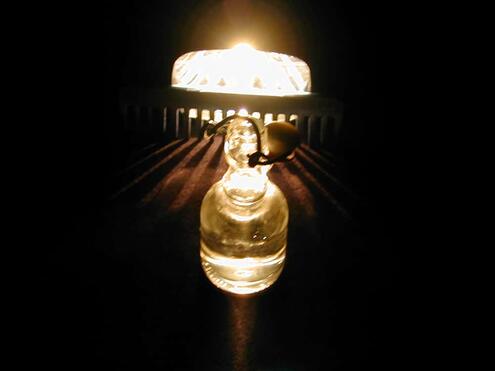

The speed of light isn't always the same. It actually slows down when it moves through some transparent materials, like glass or water. When light slows down, it changes direction. This "refraction" of light is the reason a straw in water looks bent or broken and why objects viewed through a glass bottle appear distorted.

In the same way light reflects differently off different surfaces, it also refracts differently depending on the shape of the material. This can make refraction very useful. For example, the curve of eyeglasses directs light rays into the eyes more effectively. Magnifying lenses also use refraction: the convex lens bends the light rays so the image appears larger.
What You'll Need

- 1 flashlight
- 1 wide-toothed comb
- 2 clear bottles or glasses
- Water
- Cooking oil
- Construction paper (optional)
What To Do
Try This!
Image Credits:
Magnifying glass by Jade87 from Pixabay; all other images, courtesy of AMNH




 Biodiversity
Biodiversity
 Brain
Brain
 Genetics
Genetics
 Marine BiOLogy
Marine BiOLogy
 MicrobiOLogy
MicrobiOLogy
 PaleontOLogy
PaleontOLogy
 ZoOLogy
ZoOLogy
 AnthropOLogy
AnthropOLogy
 ArchaeOLogy
ArchaeOLogy
 Astronomy
Astronomy
 Climate Change
Climate Change
 Earth
Earth
 Physics
Physics
 Water
Water







